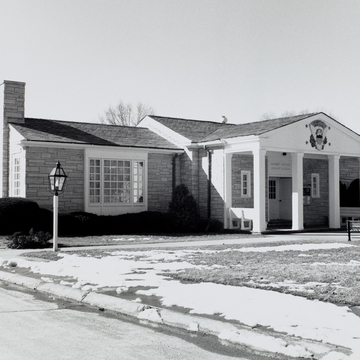The New York firm of Otto R. Eggers and David Paul Higgins was engaged to design the library and museum. Both Eggers and Higgins had been longtime associates (since 1922) of John Russell Pope; and it was their firm that completed Pope's work in Washington, including the Jefferson Memorial and the National Gallery. The selection of the firm for the Hoover project was a logical one, not only because of its Washington connections but because of the many Colonial Revival buildings the architects had designed, both while they were with Pope and afterward. Their solution to the design for the combined Hoover library and museum was meant to be a modest one, a design that in scale and size would seem at home in a small community. Their product was a single-story stone-sheathed building somewhat reminiscent of a post-World War II suburban dwelling, with just the needed light flavor of the Colonial Revival (and a slight hint of the then-popular California ranch house).
You are here
Herbert Hoover Presidential Library and Museum Building
If SAH Archipedia has been useful to you, please consider supporting it.
SAH Archipedia tells the story of the United States through its buildings, landscapes, and cities. This freely available resource empowers the public with authoritative knowledge that deepens their understanding and appreciation of the built environment. But the Society of Architectural Historians, which created SAH Archipedia with University of Virginia Press, needs your support to maintain the high-caliber research, writing, photography, cartography, editing, design, and programming that make SAH Archipedia a trusted online resource available to all who value the history of place, heritage tourism, and learning.

